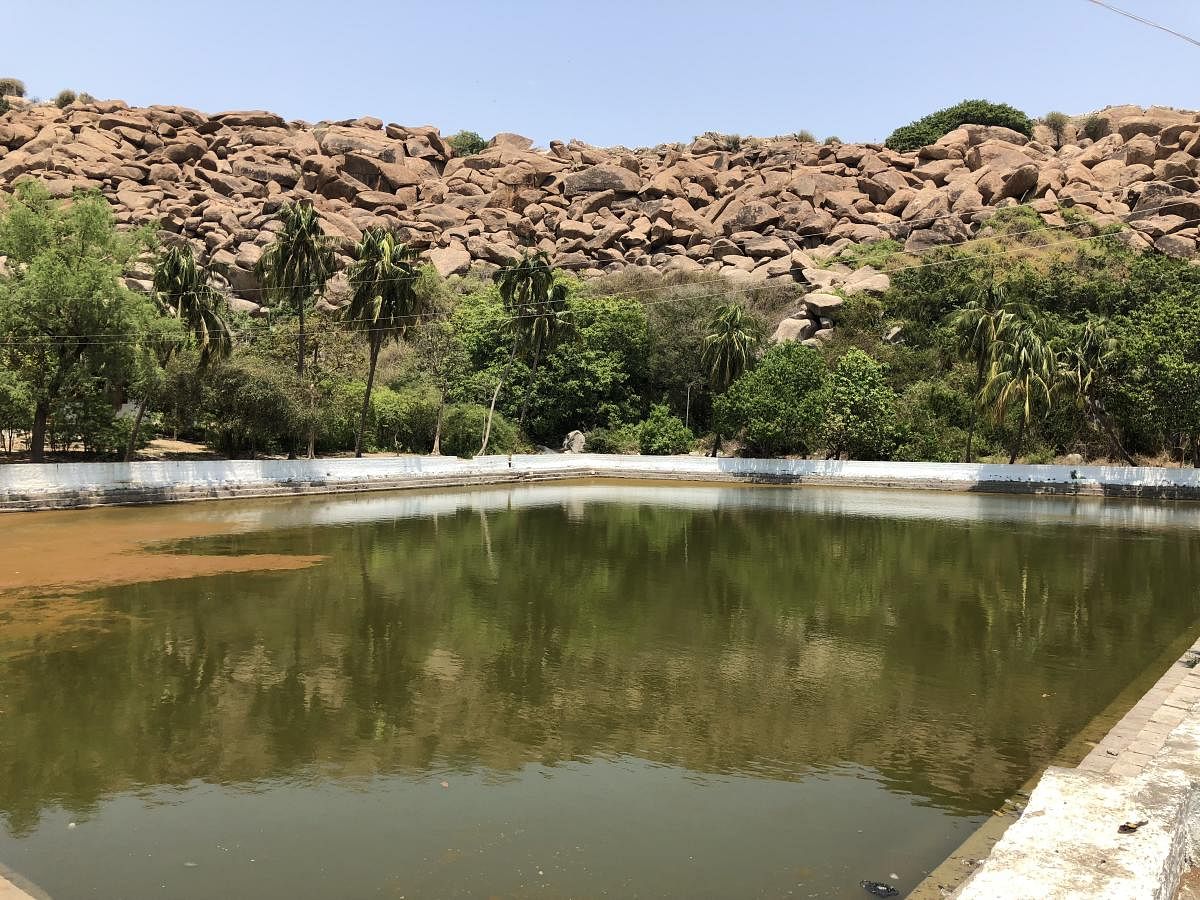Journeying through the lands of Ramayana


Hampi continues to be one of the most popular weekend getaways for people from Bengaluru and neighbouring places, what with the ruins of the Vijayanagar empire and the Virupapur village, popularly known as Hippie Island, seeing huge crowds during tourist seasons. But a short distance from these “touristy” places lies the ancient, mythological, monkey kingdom of Kishkindha, popular mainly with devotees of Lord Hanuman, who is believed to have been born here. Many episodes from the Ramayana also purportedly took place here.
Panoramic views
In the heart of Kishkindha is Anjanadri Hill, believed to be the birthplace of Lord Hanuman, something that’s being closely contested by the Tirumala Tirupati Devasthanams. A steep ascent of almost 600 narrow steps takes one to the top of the hill, which provides a panoramic view of Hampi’s magnificent ruins, making for a picture-perfect frame to photograph the sun setting over the glorious ruins. The climb to the top is arduous, but the views more than make up for the trek. The city of Hampi comes alive with the Tungabhadra River flowing like a garland across Hampi’s stone ruins which dance magnificently as reflections in the river, while fishermen try to catch fish in their homemade bamboo coracle boats.
According to locals, so smitten was Lord Hanuman by the view of the setting sun from Anjanadri Hill, that he assumed it to be a fruit and made a jump for it, burning his face in the process. On a large rock just about halfway to the top, one can make out Lord Hanuman’s face, complete with eyes, nose, and a mouth, looking towards the North. This is nature’s proof that he was born here, claim locals. On the top of the hill is a temple dedicated to Lord Hanuman, and here one finds one of
the most interesting artefacts from the Ramayana — a piece of stone, floating in the water, that is believed to be of the type that was used to build the Ram Setu to Sri Lanka. Along the rocky hills that are typical of the region, one comes across a nondescript pair of rocks that give way to a large crevice. Legend has it that this is the spot where King Bali allegedly went off to fight a demon that had been tormenting the monkeys of Kishkindha. When Bali did not return for a month, Sugreev, his younger brother, blocked the cave with a large boulder, following his elder brother’s instructions, and assumed the throne of Kishkindha. However, Bali emerged victoriously and found his exit blocked, broke through the boulder, banished Sugreev, and enslaved his wife as punishment for the alleged mutiny. Years later, Sugreev managed to defeat Bali, but only with Lord Rama’s help, who arrived there with Lord Hanuman.
Holy waters
A trip to Hampi is incomplete without visiting the place that gives the city its name — Pampa Sarovar. It is here that Pampa, or Goddess Parvati is said to have immersed herself in meditation for 700 years, after which a pond emerged from the ground, followed by a shower of gold. Pampa Sarovar is also where Shabri, Lord Rama’s devotee, offered him berries to rescue Goddess Sita. One of the holiest water bodies of Hindus, Pampa Sarovar, finds many a devotee taking a dip in the holy water, much like Lord Rama did centuries ago. With time, Pampa became Pampi, later transformed into Hampi by the British. And thus was born the city of Pampapur, or Hampi, as it is now called.
Hampi was destroyed somewhere in the 16th century AD. With a weak king and the lustful eyes of the Bahamani Sultanate, Hampi eventually fell after five attempts on the city. Today, the Virupaksha Temple stands as a testament to Indian innovation, with a pin-hole camera dating back to the 16th century AD. A short distance away, the Vijaya Vittala Temple houses musical pillars that recreate sounds of different musical instruments when tapped. Several centuries later, the science behind these pillars is yet to be understood. Hampi is India’s Babylon-mysterious and enchanting.
With Hampi gaining popularity on social media due to its photogenic landscape and ruins, one hopes that more Indians throng this living museum once travel becomes safer.